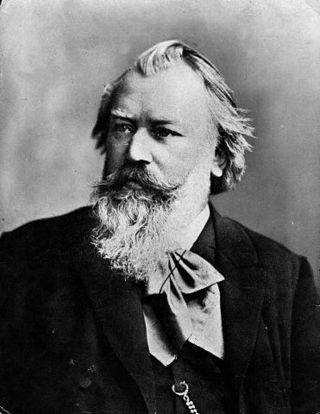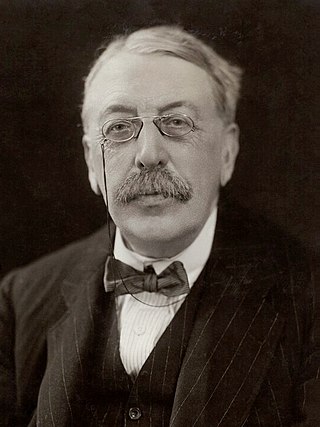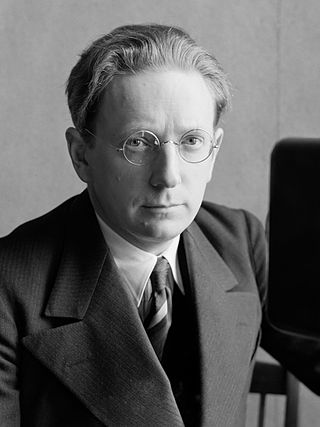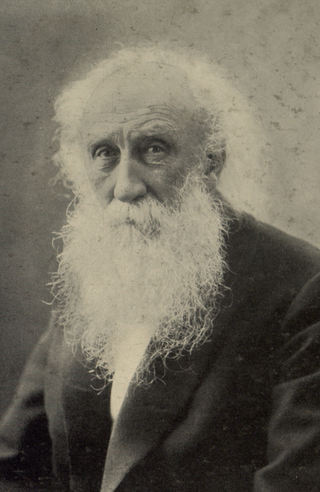This article has multiple issues. Please help improve it or discuss these issues on the talk page . (Learn how and when to remove these template messages)
|
Jon W. Finson (born 4 November 1950) is an American musicologist. [1]
This article has multiple issues. Please help improve it or discuss these issues on the talk page . (Learn how and when to remove these template messages)
|
Jon W. Finson (born 4 November 1950) is an American musicologist. [1]
He became known through the publication of the first version of Schumann's Symphony No. 4 in D minor in 2003 in Wiesbaden. Two of his six books published to date can be regarded as masterpieces of Robert Schumann research:
Together with Ulf Wallin, he won the 2013 Robert Schumann Prize of the City of Zwickau.

Johannes Brahms was a German composer, pianist, and conductor of the mid-Romantic period. Born in Hamburg into a Lutheran family, he spent much of his professional life in Vienna. He is sometimes grouped with Johann Sebastian Bach and Ludwig van Beethoven as one of the "Three Bs" of music, a comment originally made by the nineteenth-century conductor Hans von Bülow.

A symphony is an extended musical composition in Western classical music, most often for orchestra. Although the term has had many meanings from its origins in the ancient Greek era, by the late 18th century the word had taken on the meaning common today: a work usually consisting of multiple distinct sections or movements, often four, with the first movement in sonata form. Symphonies are almost always scored for an orchestra consisting of a string section, brass, woodwind, and percussion instruments which altogether number about 30 to 100 musicians. Symphonies are notated in a musical score, which contains all the instrument parts. Orchestral musicians play from parts which contain just the notated music for their own instrument. Some symphonies also contain vocal parts.

Robert Schumann was a German composer, pianist, and influential music critic. He is widely regarded as one of the greatest composers of the Romantic era. Schumann left the study of law, intending to pursue a career as a virtuoso pianist. His teacher, Friedrich Wieck, a German pianist, had assured him that he could become the finest pianist in Europe, but a hand injury ended this dream. Schumann then focused his musical energies on composing.

Clara Josephine Schumann was a German pianist, composer, and piano teacher. Regarded as one of the most distinguished pianists of the Romantic era, she exerted her influence over the course of a 61-year concert career, changing the format and repertoire of the piano recital by lessening the importance of purely virtuosic works. She also composed solo piano pieces, a piano concerto, chamber music, choral pieces, and songs.

Samuel Osmond Barber II was an American composer, pianist, conductor, baritone, and music educator, and one of the most celebrated composers of the 20th century. The music critic Donal Henahan said, "Probably no other American composer has ever enjoyed such early, such persistent and such long-lasting acclaim." Principally influenced by nine years' composition studies with Rosario Scalero at the Curtis Institute and more than 25 years' study with his uncle, the composer Sidney Homer, Barber's music usually eschewed the experimental trends of musical modernism in favor of traditional 19th-century harmonic language and formal structure embracing lyricism and emotional expression. However, he adopted elements of modernism after 1940 in some of his compositions, such as an increased use of dissonance and chromaticism in the Cello Concerto (1945) and Medea's Dance of Vengeance (1955); and the use of tonal ambiguity and a narrow use of serialism in his Piano Sonata (1949), Prayers of Kierkegaard (1954), and Nocturne (1959).

Sir Charles Villiers Stanford was an Anglo-Irish composer, music teacher, and conductor of the late Romantic era. Born to a well-off and highly musical family in Dublin, Stanford was educated at the University of Cambridge before studying music in Leipzig and Berlin. He was instrumental in raising the status of the Cambridge University Musical Society, attracting international stars to perform with it.

Jón Leifs was an Icelandic composer, pianist, and conductor.

Howard Harold Hanson was an American composer, conductor, educator, music theorist, and champion of American classical music. As director for 40 years of the Eastman School of Music, he built a high-quality school and provided opportunities for commissioning and performing American music. In 1944, he won a Pulitzer Prize for his Symphony No. 4, and received numerous other awards including the George Foster Peabody Award for Outstanding Entertainment in Music in 1946.

The Piano Concerto No. 1 in D minor, Op. 15, is a work for piano and orchestra completed by Johannes Brahms in 1858. The composer gave the work's public debut in Hanover, the following year. It was his first-performed orchestral work, and his first orchestral work performed to audience approval.
The Symphony in C major by German composer Robert Schumann was published in 1847 as his Symphony No. 2, Op. 61, although it was the third symphony he had completed, counting the B-flat major symphony published as No. 1 in 1841, and the original version of his D minor symphony of 1841. It is dedicated to Oscar I, king of Sweden and Norway.
Gardner Read was an American composer and musical scholar.
William Joseph Russo was an American composer, arranger, and musician from Chicago, Illinois, United States.

The Symphony No. 1 in B♭ major, Op. 38, also known as the Spring Symphony, is the first completed symphonic work composed by Robert Schumann.

Anthony Edward Payne was an English composer, music critic and musicologist. He is best known for his acclaimed completion of Edward Elgar's third symphony, which subsequently gained wide acceptance into Elgar's oeuvre. Apart from opera, his own works include representatives of most traditional genres, and although he made substantial contributions to orchestral and choral repertoire, he is particularly noted for his chamber music. Many of these chamber works were written for his wife, the soprano Jane Manning, and the new music ensemble Jane's Minstrels, which he founded with Manning in 1988. Initially an unrelenting proponent of modernist music, by the 1980s his compositions had embraced aspects of the late romanticism of England, described by his colleague Susan Bradshaw as "modernized nostalgia". His mature style is thus characterised by a highly individualised combination of modernism and English romanticism, as well as numerology, wide-spaced harmonies, specific intervallic characterisations, and the frequent alternation between strict and fluid rhythmic frameworks.
The Symphony No. 4 in D minor, Op. 120, composed by Robert Schumann, was first completed in 1841. Schumann heavily revised the symphony in 1851, and it was this version that reached publication.

Franz Schubert wrote his Sonata in C major for piano four-hands, D 812, in June 1824 during his second stay at the Esterházy estate in Zseliz. The extended work, in four movements, has a performance time of around 40 to 45 minutes. It was published as Grand Duo, Op. 140, in 1837, nine years after the composer's death.
Progressive tonality is the music compositional practice whereby a piece of music does not finish in the key in which it began, but instead 'progresses' to an ending in a different key or tonality. In this connection 'different key' means a different tonic, rather than merely a change to a different mode : Gustav Mahler's Second Symphony (1888–94), for example, which moves from a C minor start to an E-flat major conclusion, exhibits 'progressive tonality'—whereas Ludwig van Beethoven's Fifth Symphony (1804–08), which begins in C minor and ends in C major, does not. A work which ends in the key in which it began may be described as exhibiting 'concentric tonality'. The terms 'progressive' and 'concentric' were both introduced into musicology by Dika Newlin in her book Bruckner, Mahler, Schoenberg (1947).
In music, a standard is a musical composition of established popularity, considered part of the "standard repertoire" of one or several genres. Even though the standard repertoire of a given genre consists of a dynamic and partly subjective set of songs, these can be identified by having been performed or recorded by a variety of musical acts, often with different arrangements. In addition, standards are extensively quoted by other works and commonly serve as the basis for musical improvisation. Standards may "cross over" from one genre's repertoire to another's; for example, many jazz standards have entered the pop repertoire, and many blues standards have entered the rock repertoire.

Julius Otto Grimm was a German composer, conductor and musician of Westphalia. He is best remembered today as one of the best friends of Johannes Brahms, whom he met in Leipzig in 1853. Brahms dedicated his 4 Ballades, Op 10, to him.